Deskripsi
Perkenalan
Kupon korosi pada pipa adalah instrumen sederhana namun efisien yang digunakan di sektor industri untuk memantau laju korosi dalam berbagai situasi. Ini adalah bagian kecil dan standar dari logam yang menunjukkan bahan sistem dan mengalami kondisi lingkungan yang sama dengan sistem yang dipantau. Kupon diperiksa dan ditimbang secara teratur untuk menentukan hilangnya material karena korosi selama periode tertentu, memberikan informasi penting tentang aktivitas korosif dalam sistem.
Kupon korosi adalah bit logam standar kecil yang digunakan untuk memantau dan mengukur laju korosi dalam pipa di berbagai industri. Mereka dimasukkan langsung ke dalam sistem pipa, mengalami kondisi yang sama untuk jumlah waktu yang ditentukan, dan kemudian dinilai. Penurunan berat badan dan perubahan fisik yang diperhatikan pada kupon memberikan informasi tentang korosif lingkungan pipa. Informasi ini sangat penting untuk membuat keputusan berdasarkan informasi tentang pemeliharaan pipa, teknik pencegahan korosi, dan integritas sistem, yang membantu pengurangan biaya dan keselamatan operasional.
Pentingnya Pemantauan Korosi pada Jaringan
Korosi dalam jaringan pipa adalah masalah yang signifikan karena potensinya untuk mengkompromikan efisiensi operasional, meningkatkan biaya, dan menimbulkan risiko keselamatan. Korosi dapat menyebabkan kerusakan pipa, menyebabkan kebocoran, pecah, atau bahkan kegagalan sistem total, yang tidak hanya mengganggu operasi tetapi juga memerlukan perbaikan atau penggantian yang mahal. Di luar biaya perbaikan langsung, kegagalan terkait korosi dapat menyebabkan biaya tidak langsung yang substansial seperti downtime operasional, pembersihan lingkungan, kewajiban hukum potensial, dan hukuman peraturan. Risiko keamanan ini ditingkatkan untuk saluran pipa yang membawa bahan berbahaya karena potensi kontaminasi lingkungan, kebakaran, ledakan, atau kecelakaan lainnya. Oleh karena itu, pemantauan dan pengelolaan korosi secara rutin sangat penting untuk menjaga keamanan pipa dan efisiensi operasional.
Memahami Kupon Korosi
Bagaimana Kupon Korosi Kerja di Pipeline
Kupon korosi adalah perangkat rekayasa ilmiah yang digunakan dalam industri minyak, gas, dan air untuk mengukur laju kerusakan logam, juga dikenal sebagai korosi, dalam sistem pipa. Ini biasanya strip logam standar, cakram, atau batang yang terbuat dari bahan yang sama dengan pipa. Prosedur untuk menggunakan kupon korosi melibatkan membubuhkan mereka langsung ke sistem pipa. Dengan melakukan itu, mereka terpapar variabel lingkungan yang identik dengan pipa, termasuk konstituen cairan, suhu, tekanan, dan kecepatan aliran. Paparan ini memastikan bahwa korosi yang dialami oleh kupon adalah representasi yang akurat dari kondisi korosif dalam pipa.
Setelah periode paparan yang telah ditentukan, kupon terlepas dari pipa untuk analisis menyeluruh. Ini termasuk menimbang secara akurat kupon sebelum dan sesudah paparan untuk menentukan penurunan berat badan, indikator penting dari jumlah logam yang terkorosi selama periode yang ditentukan. Selain penurunan berat badan, kupon diperiksa dengan cermat untuk perubahan fisik. Ini mungkin termasuk pitting, suatu bentuk korosi yang sangat terlokalisasi yang mengarah pada penciptaan lubang atau rongga kecil di permukaan, atau keausan secara keseluruhan. Setiap bentuk perubahan fisik menyampaikan informasi khusus tentang jenis korosi, memberikan wawasan penting tentang kondisi korosif dalam pipa.
Dengan menganalisis penurunan berat badan dan perubahan fisik dari kupon korosi, perkiraan laju dan jenis korosi yang akurat yang terjadi di dalam pipa dapat disimpulkan. Data ini sangat penting untuk merumuskan strategi pemantauan korosi dan mitigasi yang akurat, sehingga memastikan keberlanjutan operasional sistem pipa.
Jenis Kupon Korosi pada Pipa
Kupon strip pada pipa adalah jenis kupon korosi yang paling umum digunakan, terutama karena rasio area-ke-volume permukaan yang besar. Karakteristik ini membuat mereka sangat bermanfaat untuk mengamati dan menilai tingkat korosi umum. Kupon -kupon ini, biasanya persegi panjang, menyediakan area yang luas dan seragam untuk terjadi korosi. Area permukaan yang luas mendorong tingkat korosi yang lebih rata -rata di atas kupon, yang dapat mewakili tingkat korosi keseluruhan dalam pipa. Selain itu, kesederhanaan kupon strip memungkinkan untuk pemasangan dan penghapusan yang mudah, lebih lanjut berkontribusi pada popularitasnya dalam pemantauan korosi.
Kupon silinder atau batang pada pipa melayani tujuan khusus dalam pemantauan korosi. Mereka terutama digunakan dalam sistem di mana kondisi aliran hadir. Bentuk silinder dari kupon -kupon ini meniru permukaan interior pipa, memungkinkan representasi yang lebih akurat tentang bagaimana korosi akan terjadi dalam kondisi pipa nyata. Ini membuat mereka sangat efektif dalam mempelajari efek kecepatan fluida dan turbulensi pada laju korosi. Dengan mensimulasikan kondisi yang sama dengan permukaan internal pipa, kupon batang dapat membantu memahami dampak dinamika aliran pada proses korosi, memberikan wawasan berharga untuk manajemen korosi.
Disk atau kupon datar pada pipa sering digunakan ketika ada persyaratan untuk mempelajari efek dari berbagai bahan atau pelapis dalam kondisi yang sama. Kupon -kupon ini biasanya datar dan melingkar, menawarkan permukaan kompak untuk korosi terjadi. Mereka sering digunakan saat menguji bahan baru atau pelapis pelindung untuk pipa, menyediakan lingkungan yang terkontrol untuk analisis komparatif. Dengan membandingkan laju korosi pada kupon disk yang dilapisi atau disusun secara berbeda dalam kondisi yang sama, para peneliti dapat memperoleh informasi penting tentang kinerja dan kesesuaian berbagai bahan atau pelapis untuk aplikasi pipa tertentu.
Bahan yang digunakan dalam kupon korosi pada pipa
Komposisi material kupon korosi pada pipa adalah faktor penting dalam fungsionalitas dan keandalannya. Kupon secara khusus dibuat dari bahan yang sama dengan pipa yang dimaksudkan untuk dipantau. Kongruensi dalam materi ini memastikan bahwa kupon dengan setia mencerminkan perilaku pipa dalam kondisi korosif, memberikan penggambaran yang akurat tentang laju korosi pipa.
Misalnya, jika pipa dibangun dari baja karbon, kupon korosi yang sesuai juga harus terdiri dari baja karbon. Keseragaman material ini sangat penting karena memastikan proses korosi yang terjadi pada kupon mewakili mereka yang terjadi pada pipa yang sebenarnya. Khususnya, prinsip ini berlaku untuk semua jenis bahan yang digunakan dalam konstruksi pipa, apakah mereka berbagai tingkatan baja, tembaga, kuningan, atau logam lainnya.
Selain itu, ketika sistem pipa menggabungkan bahan yang berbeda - katakanlah, karena perbaikan atau peningkatan - kupon korosi yang sesuai harus mencerminkan perubahan ini. Ini dapat melibatkan penggunaan beberapa kupon yang terbuat dari bahan yang berbeda dalam sistem pipa yang sama. Dengan melakukan itu, kupon dapat memberikan data komprehensif tentang tingkat korosi bahan yang berbeda di bawah kondisi operasi yang sama.
Selain bahan dasar, pelapis atau perawatan apa pun yang diterapkan pada pipa juga harus direplikasi pada kupon. Jika pipa dilapisi dengan lapisan anti-korosi tertentu, kupon korosi harus memiliki lapisan yang sama. Ini memungkinkan penilaian efektivitas pelapisan dari waktu ke waktu dan dalam kondisi yang sama dengan pipa yang sebenarnya.
Oleh karena itu, penerapan bahan dalam pembuatan kupon korosi memainkan peran penting dalam memastikan pemantauan korosi yang akurat, andal, dan komprehensif dalam sistem pipa. Perhatian terhadap detail ini membantu memberikan data yang tepat, yang pada gilirannya memfasilitasi pengembangan strategi pemeliharaan proaktif dan efektif untuk infrastruktur pipa.
Pemasangan kupon korosi pada pipa
Pemasangan kupon korosi pada pipa
Kupon korosi biasanya dipasang pada pemegang kupon, yang kemudian dimasukkan ke dalam rak kupon yang langsung dipasang ke pipa. Prosedur ini harus dilakukan dengan hati -hati untuk memastikan bahwa kupon diposisikan dengan benar dan terpapar pada keadaan yang sama dengan pipa. Pemegang kupon memungkinkan penyisipan dan pelepasan kupon yang mudah tanpa mematikan seluruh sistem.
Pengambilan kupon korosi untuk analisis
Kupon korosi pada pipa biasanya diambil untuk dianalisis setelah periode paparan yang telah ditentukan, yang dapat berkisar dari beberapa minggu hingga satu tahun, tergantung pada tingkat korosi yang diproyeksikan dan norma -norma industri. Kupon harus dihapus dengan hati -hati dari pemegang dan dibersihkan untuk menghilangkan produk korosi. Setelah itu, kupon ditimbang untuk memastikan penurunan berat badan, yang digunakan untuk menghitung laju korosi. Selain itu, kupon dapat diperiksa untuk bukti korosi lokal, seperti pitting, yang dapat memberikan informasi tambahan tentang aktivitas korosif dalam pipa.
Keuntungan kupon korosi pada pipa
Kupon korosi pada jaringan pipa menawarkan manfaat biaya yang signifikan. Mereka relatif ekonomis untuk diproduksi dan dipasang, menjadikannya metode yang terjangkau untuk pemantauan kesehatan pipa rutin. Selain itu, kemampuan mereka untuk mendeteksi korosi lebih awal membantu mencegah kegagalan pipa yang mahal dan memperpanjang masa pakai infrastruktur, menghasilkan penghematan jangka panjang yang substansial.
Implementasi kupon korosi pada jaringan pipa berperan dalam memperpanjang masa pakai pipa. Mereka menawarkan data yang tepat tentang tingkat dan jenis korosi, memfasilitasi pemeliharaan proaktif dan manajemen korosi yang tepat. Hal ini memungkinkan intervensi tepat waktu seperti penerapan penghambat korosi atau penggantian segmen sebelum kerusakan yang signifikan terjadi, akibatnya memperpanjang umur keseluruhan dan mengoptimalkan pengembalian investasi infrastruktur.
Terakhir, kupon korosi pada pipa secara signifikan meningkatkan keamanan pipa. Mereka bertindak sebagai sistem peringatan dini untuk meningkatkan aktivitas korosi yang dapat mengakibatkan kebocoran atau pecahnya pipa. Dengan memungkinkan deteksi dini, tindakan yang tepat dapat diambil untuk mencegah kegagalan, sehingga meningkatkan keamanan sistem pipa. Ini tidak hanya meminimalkan risiko kontaminasi lingkungan tetapi juga mengurangi bahaya keselamatan yang terkait dengan kebocoran atau kegagalan pipa.
Kesimpulan
Kupon korosi yang digunakan dalam sistem pipa menawarkan manfaat ekonomi yang substansial. Biaya produksi dan pemasangan mereka relatif minim, memposisikannya sebagai solusi hemat biaya untuk penilaian kesehatan pipa yang konsisten. Selain itu, kapasitas mereka untuk mengidentifikasi korosi pada awalnya memfasilitasi pencegahan kerusakan pipa yang mahal dan meningkatkan umur panjang infrastruktur, yang menghasilkan keunggulan keuangan jangka panjang yang penting.
Integrasi kupon korosi ke dalam sistem pipa memainkan peran penting dalam memperluas umur operasional infrastruktur penting ini. Mereka memberikan data yang akurat dan terperinci mengenai laju korosi dan jenis spesifiknya, sehingga memungkinkan manajemen korosi yang tepat dan pemeliharaan proaktif. Pendekatan berbasis data ini memungkinkan inisiatif tepat waktu seperti penerapan inhibitor korosi atau penggantian segmen pipa spesifik sebelum kerusakan substansial terjadi. Efek yang dihasilkan adalah perpanjangan dari umur operasional keseluruhan sistem dan maksimalisasi pengembalian investasi infrastruktur.
Selain itu, pemanfaatan kupon korosi dalam jaringan pipa secara signifikan mendukung keselamatan sistem. Berfungsi sebagai mekanisme deteksi dini untuk meningkatkan aktivitas korosi, perangkat ini dapat mencegah potensi kebocoran atau pecah di dalam pipa. Kemampuan deteksi dini ini memungkinkan langkah -langkah pencegahan yang cepat, sehingga meningkatkan keamanan keseluruhan sistem pipa. Ini tidak hanya mengurangi kemungkinan polusi lingkungan tetapi juga mengurangi risiko keselamatan yang terkait dengan kebocoran pipa atau kegagalan bencana.

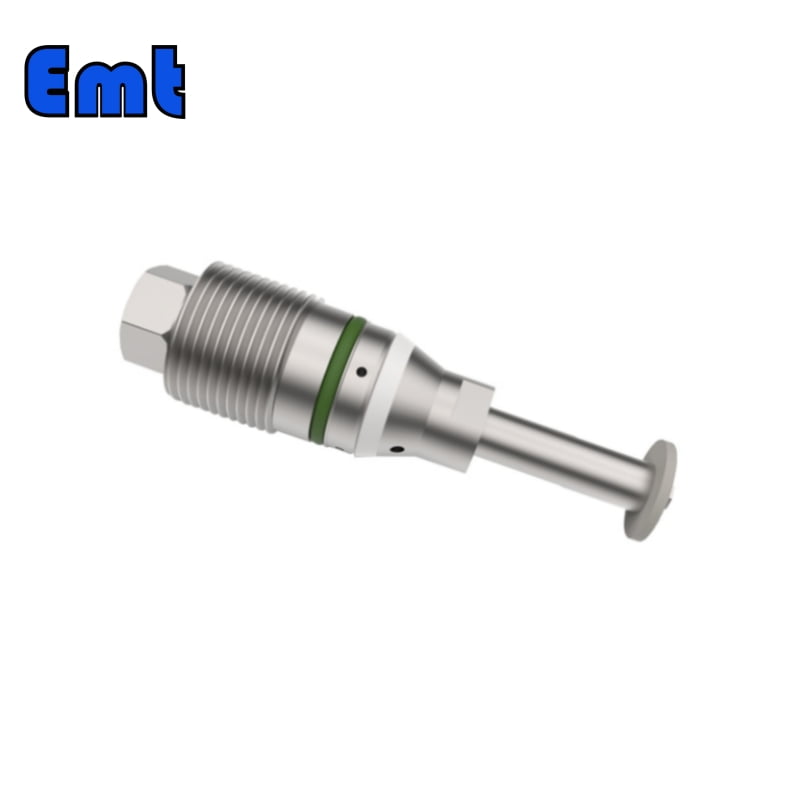
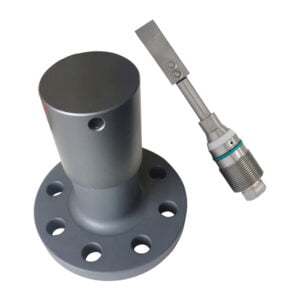
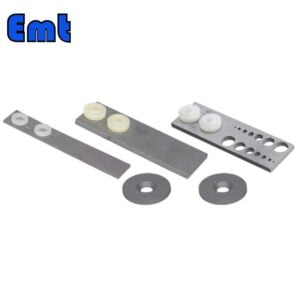
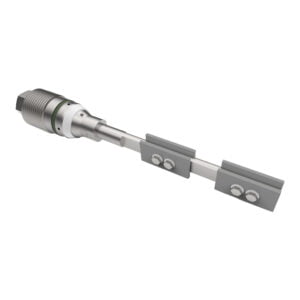
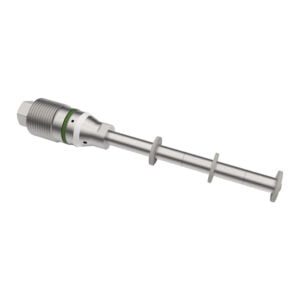
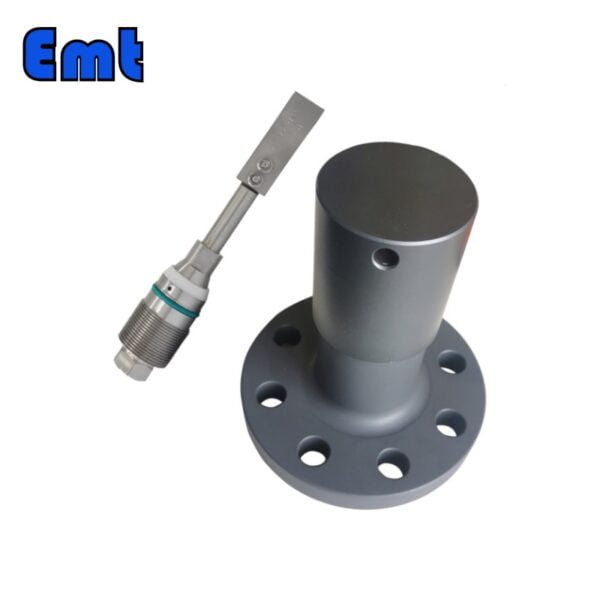
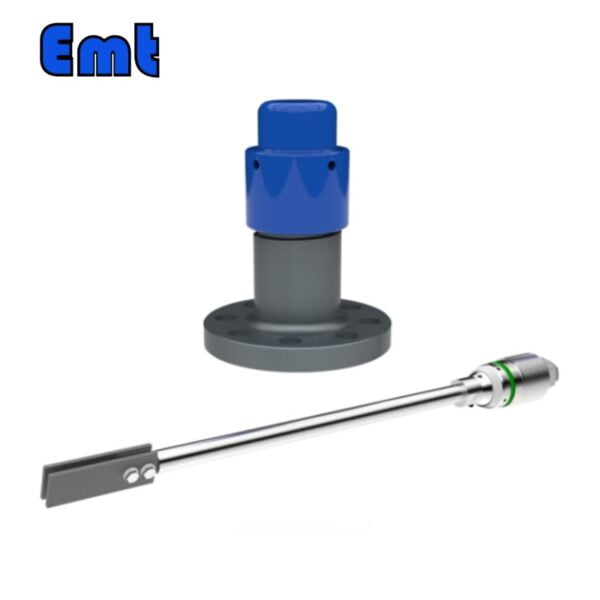
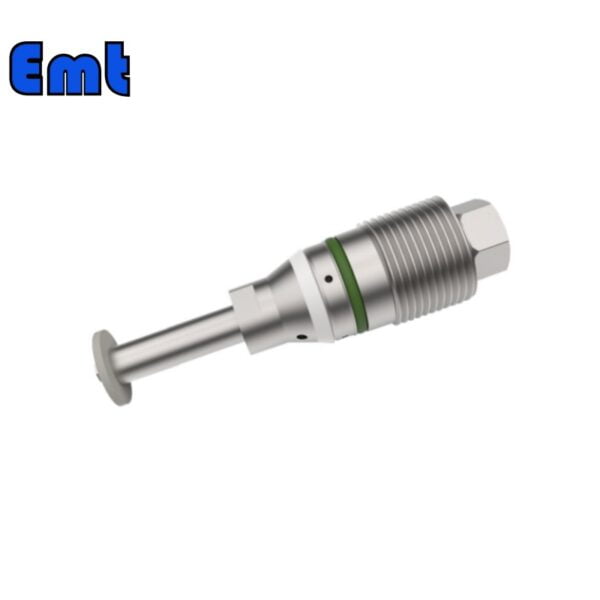
-600x600.jpg)
Ulasan
Belum ada ulasan.